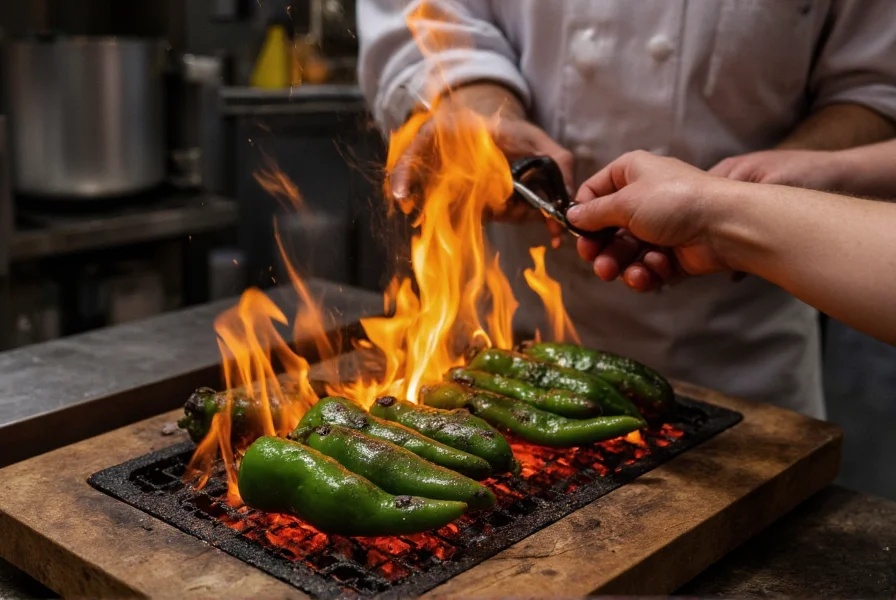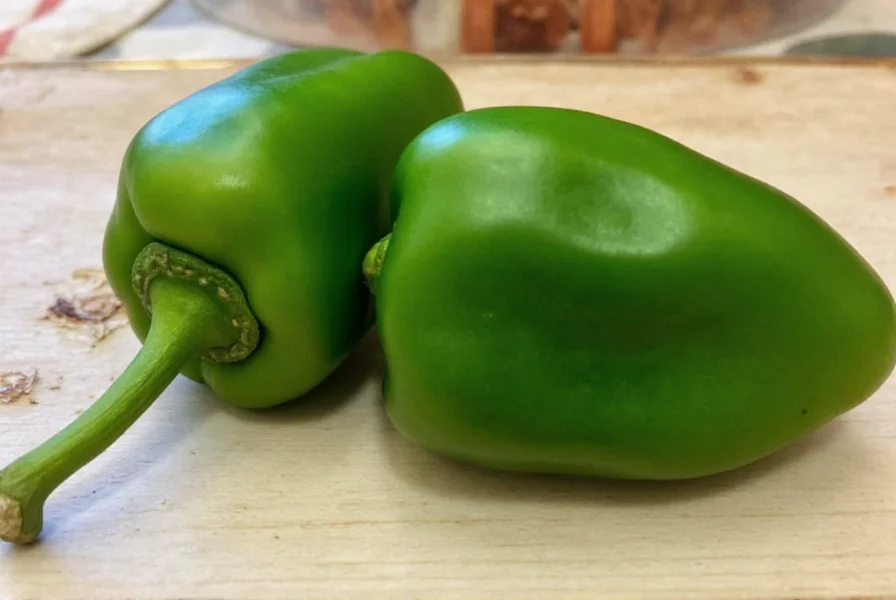Understanding where poblano peppers fall on the Scoville scale helps home cooks and culinary professionals make informed decisions when selecting peppers for recipes. These versatile Mexican peppers offer a subtle heat that enhances dishes without overwhelming other flavors—a quality that has made them kitchen staples for centuries.
What Is the Scoville Scale?
The Scoville scale measures chili pepper heat intensity by determining capsaicin concentration—the compound responsible for that characteristic burn. Developed by pharmacist Wilbur Scoville in 1912, the scale assigns Scoville Heat Units (SHU) based on how much sugar-water dilution is required to neutralize the heat. Modern testing uses high-performance liquid chromatography for precise measurements, but the Scoville scale remains the standard reference.
Poblano Pepper Characteristics
Poblanos ( Capsicum annuum) are large, heart-shaped peppers that start dark green and mature to deep red. When dried, they're called ancho peppers (meaning "wide" in Spanish), which develop a richer, slightly sweeter flavor profile. Fresh poblanos typically measure 3-5 inches long with thick walls ideal for stuffing.

Where Poblanos Fit in the Pepper Heat Spectrum
At 1,000-2,000 SHU, poblanos occupy the lower-middle range of the Scoville scale. Their heat is noticeable but rarely overwhelming—comparable to a light pinch of black pepper rather than the intense burn of hotter varieties. This moderate heat level makes them accessible to most palates while still providing that desirable chili warmth.
| Pepper Variety | Scoville Heat Units | Heat Level |
|---|---|---|
| Bell Pepper | 0 SHU | Mild |
| Poblano Pepper | 1,000-2,000 SHU | Mild-Medium |
| Jalapeño Pepper | 2,500-8,000 SHU | Medium |
| Serrano Pepper | 10,000-23,000 SHU | Medium-Hot |
| Habanero Pepper | 100,000-350,000 SHU | Very Hot |
Factors That Affect Poblano Heat Levels
Several variables influence poblano pepper spiciness:
- Growing conditions: Stressors like inconsistent watering or extreme temperatures can increase capsaicin production
- Ripeness: Red (mature) poblanos tend to be slightly hotter than green ones
- Seed and membrane content: The white pith and seeds contain most capsaicin—removing them reduces heat significantly
- Individual variation: Even within the same plant, heat levels can vary between peppers
Culinary Applications of Poblano Peppers
The poblano's mild heat makes it exceptionally versatile in cooking. Chefs value them for:
- Chiles Rellenos (stuffed peppers)
- Mole sauces
- Enchiladas
- Roasted pepper dishes
- As a milder alternative to jalapeños in salsas
When roasting fresh poblanos, their thin skin blackens easily, creating a smoky flavor while preserving their characteristic mild heat. The roasted peppers work particularly well in dishes where you want pepper flavor without intense spiciness.

Substituting Poblanos in Recipes
If you can't find poblanos, consider these alternatives based on desired heat level:
- For similar mild heat: Anaheim peppers (500-2,500 SHU) or cubanelle peppers (100-1,000 SHU)
- For slightly more heat: Jalapeños (use half the amount)
- For dried pepper equivalent: Ancho chilies (the dried form of poblano)
Remember that substitution ratios aren't exact due to flavor differences—poblanos have a distinctive earthy, slightly fruity profile that other peppers may not replicate perfectly.
Measuring Pepper Heat at Home
While professional Scoville testing requires laboratory equipment, you can gauge relative heat through careful tasting:
- Wear gloves when handling hot peppers
- Remove seeds and membranes (the hottest parts)
- Take a small bite of the pepper flesh
- Wait 1-2 minutes for full heat sensation to develop
- Compare to known references (like a jalapeño)
Never use this method with extremely hot peppers like ghost peppers or Carolina reapers—these require professional handling.
Frequently Asked Questions
Are poblano peppers hotter than jalapeños?
No, poblano peppers are milder than jalapeños. Poblanos range from 1,000-2,000 Scoville Heat Units while jalapeños measure 2,500-8,000 SHU. A poblano typically has about half the heat of a mild jalapeño.
Can you eat poblano peppers raw?
Yes, you can eat poblano peppers raw, though their thick walls make them somewhat tough compared to thinner-skinned peppers. Raw poblanos have a grassy, slightly bitter flavor that mellows when roasted or cooked. Many people prefer them cooked to enhance their natural sweetness.
Why do some poblano peppers taste hotter than others?
Poblano heat varies due to growing conditions (water stress increases heat), ripeness (red poblanos are often hotter), and individual plant genetics. The amount of white pith and seeds left in the pepper also significantly affects perceived heat, as these contain most of the capsaicin.
How do you reduce the heat of poblano peppers?
To reduce poblano heat, remove all seeds and the white membrane inside the pepper, which contains most capsaicin. Soaking sliced peppers in salt water for 30 minutes can also draw out some heat compounds. Cooking methods like roasting or boiling further reduce perceived spiciness.
What's the difference between poblano and ancho peppers?
Poblano and ancho peppers are the same variety—anchos are simply dried poblanos. Fresh poblanos are dark green and measure 1,000-2,000 SHU, while dried anchos turn deep red/brown and develop a slightly sweeter, smokier flavor with similar heat levels. The drying process concentrates flavors but doesn't significantly increase heat.











 浙公网安备
33010002000092号
浙公网安备
33010002000092号 浙B2-20120091-4
浙B2-20120091-4